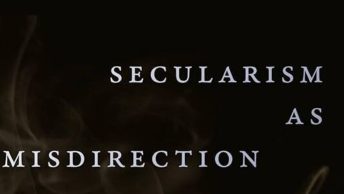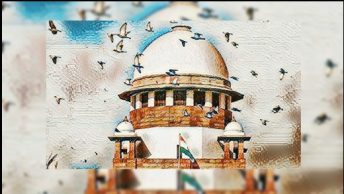As our readers might be aware, we have recently started the New Scholarship Section on our Blog, to promote new academic literature in the field of public law. As an added dimension to this, we have decided to invite discussants to respond to specific articles. The authors will also respond to these pieces, if they choose to.
We’re extremely happy to kick-off this by starting a discussion around the public law themed articles featured in the recently released Issue 1 of the 2020 Volume of the Indian Law Review. This post will link all the responses to the Articles from this Issue of ILR.
I. The first piece that we have under discussion is from Tarunabh Khaitan. Prof. Khaitan is the Professor of Public Law & Legal Theory and the Hackney Fellow in Law at Wadham College, Oxford. He is currently a Future Fellow at the University of Melbourne and also a visiting Global Professor of Law at New York University Law School. His piece is titled “The Indian Supreme Court’s identity crisis: a constitutional court or a court of appeals?” which is available at https://doi.org/10.1080/24730580.2020.1730543
The abstract states- “This article presents an empirical analysis of the Supreme Court’s discretionary appellate jurisdiction (triggered by a “special leave petition” or “SLP”). Based on an analysis of 1100 randomly selected civil SLP cases spread over 11 years, it argues that its expansive SLP docket has cannibalized the Court’s role as an effective constitutional court. It reveals that the admissibility of special leave petitions has a statistically significant relationship with the presence of a “senior advocate” during the admissions hearing. The article emphasizes the need for an institutional separation of the appellate and constitutional functions of the Supreme Court: either as two separate courts or as two separate divisions within a single Supreme Court. It also suggests reducing or eliminating the docket-distorting role of senior advocates – either by taking admission decisions on civil SLPs largely based on written briefs or barring senior advocates from appearing in oral admission hearings for civil SLPs.”
-
- Prof. Khaitan talks about his Article in an interview with the Supreme Court Observer available here.
- Dr. Rishad Chowdhury responds to the paper on our Blog here and he highlights important questions raised by Prof. Khaitan for future scholarship while also raising certain areas of disagreement with the paper. Dr. Chowdhury relies on his previous work in this area, namely his paper titled ‘Missing the Wood for the Trees: The Unseen Crisis in the Supreme Court’ (2012) published by the NUJS Law Review and his J.S.D. Dissertation at the University of Chicago Law School (2016) on the same topic ‘Missing the Wood for the Trees: A Critical Exploration of the Supreme Court of India’s Chronic Struggle with its Docket’.
- Prof. Khaitan sent us a quick reply to Dr. Chowdhury’s post which was published here.
- Krithika Ashok responds to Prof. Khaitan’s paper on our Blog here. She notes that Prof. Khaitan has focused particularly on the reversal rate in SLP cases to argue that the court may be admitting more cases than it ought to; and importantly, on considering the role that Senior Advocates may play in skewing the docket of the court. She offers some thoughts on both the arguments, while also reflecting on the avenues for empirical research thrown open by this important study.
- Prof. Khaitan’s reply to Ms. Ashok’s paper has been published here.
II. The second piece that we have under discussion is by Shivaraj S. Huchhanavar, a Doctoral Student at Durham Law School. His piece, “Regulatory mechanisms combating judicial corruption and misconduct in India: a critical analysis” is available at https://doi.org/10.1080/24730580.2020.1711498
The abstract states: The paper examines regulatory mechanisms for combating judicial corruption and misconduct in India. It aims at a critical analysis of the regulatory mechanisms for both subordinate and higher courts. The study, inter alia, concludes that the regulatory mechanisms for subordinate courts lack conceptual clarity, suffer role ambiguity, and are bereft of functional autonomy; the powers and functions of these mechanisms are not clearly prescribed, and the procedures concerning complaints, inquiries and disciplinary actions are ad hoc. The mechanisms for subordinate courts are opaque, inaccessible, slow and ineffective. The paper also argues that the “in-house procedure” in the higher judiciary is inadequate, opaque, informal and judge-centric; it terms the “removal procedure” as rigid and ineffective. This paper recommends structural, organizational and functional reforms to strengthen regulatory mechanisms for the subordinate judiciary. For the higher judiciary, it proposes a constitutional body having adequate representation from a broad spectrum of the population.
-
-
-
Shivaraj Huchhanavar introduces the arguments he makes in his paper here.
-
Kaleeswaram Raj responds to the paper on our Blog here. He supplements the Paper’s focus on developing formal mechanisms with a need to inculcate an informal cultural ambiance and critical solidarity within the bar, and gives practical examples of the role the judiciary can play in its own reform process. He introduces an important point in the Paper of linking judicial appointments and judicial corruption, while discussing issues concerning Indian judiciary.
- Sumathi Chandrashekaran responds to the paper on our Blog here. She notes a number of questions have been posed by the paper, but the Paper fails to address the central issue of the downstream effect of collegium on judicial behaviour. She identifies avenues of further research, and supplements the proposals made in the Paper with practical considerations.
-
-
III. The third piece that we have under discussion is by Robi Rado, a PhD Candidate and Fellow (The Melbourne JD) at Melbourne Law School. His piece is titled “ A tale of India, diaspora and development”which is available at https://doi.org/10.1080/24730580.2020.1728640
The abstract states: In this article, I consider how the Indian state approaches the relationship between India’s development and the Indian diaspora by analysing the discourse that emerges from a key Indian government report. I argue that the Indian state uses the idea of development to support the way it governs Indians abroad. At the same time, the Indian state uses its relationship with Indians abroad to support particular policies being pursued in the name of India’s development. These policies require economic “liberalization”, including by freeing up the movement of capital and reducing rates of corporate taxation. While invoking Indians abroad to shape the governance of Indians inside of India appears counterintuitive, I argue that it reflects the way that particular notions of “overseas Indians” and “development” are being simultaneously shaped by the Indian state, and the way that the authority of the Indian state to pursue particular “development policies” is being grounded.
-
-
- Mr. Robi Rado discusses his paper here.
- In his response piece , Neeraj highlights some of Rado’s key premises. He also adds additional perspectives, anecdotes, and a few references of his own. In doing so, he attempts to contextualise Robi Rado’s arguments with a view to convey his appreciation of his article to the reader. You can find the article here.
-






Thank you for your shening. I am worried that I lack creative ideas. It is your enticle that makes me full of hope. Thank you. But, I have a question, can you help me?
Thank you for your sharing. I am worried that I lack creative ideas. It is your article that makes me full of hope. Thank you. But, I have a question, can you help me?